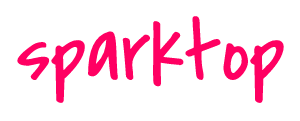Scrum. Part 2
I would like to draw your attention to the fact that these stages are not an axiom. The Scrum Guide says that you can use different techniques and approaches within Scrum, while maintaining its basic principles, changes are welcome.
So, about the stages. A sprint retrospective can be mentally divided into 5 stages:
Training. At this stage, you need to stir up the team and prepare it for further discussion.
Data collection. The team collects information about what went well in the sprint, and where there are problems
Generation of ideas. Participants share their ideas on how to fix problems and improve team action
Planning solutions. After all the ideas have been voiced, the team selects the most relevant ones and discusses their implementation
Completion. At the end of the meeting, the results are summed up
At each stage of the Scrum, the master can apply different techniques and ways of interacting with the team. Techniques help to diversify retrospectives, make them interesting and useful, while the team will look at their work from a different angle each time.
Let’s go in order and start with the “Preparation” stage, it can be done as follows:
Location. For this exercise, you need an object, such as a chair. The scrum master places a chair in the center of the room and asks the team to imagine that this chair is the sprint goal. After that, each participant is located in relation to the chair at a close distance, if the person believes that the goal is achieved, and at a distance, if it is not achieved. Then you can ask everyone to comment on their location. It should be noted that the questions for the team can be very different.
Association game. The Scrum Master asks the team to describe the past sprint in one word. You can suggest comparing it to the weather or a car. It will be clear from the emotions of the meeting participants and their associations how successful the sprint was. For example, someone will say that a sprint resembles an old nine, in which the door fell off in the middle of the sprint, but then managed to screw it on. Then this information will be considered in detail by the participants in the next stages, namely, why this happened and what to do to prevent this from happening in the future.
Mad, Sad, Glad. These three words need to be written on a flipchart or board, and the team will share their feelings in a circle that correspond to these words. It is best not to use this exercise often, as you can throw out a lot of negative emotions.
We pass to the next stage – “Data collection”. Here we need to remember the first of the two goals of the retrospective – self-directed inspection of people, relationships, processes and tools, that is, we need to collect data about how we are doing work. Let’s take a look at the techniques that can be applied at this stage.
Proud, thank you, learned. This is a very good exercise and should be done frequently. It is necessary to divide the board into 3 parts and write: Proud, thank you, learned. After that, the Scrum master asks the team to write on stickers the answers to the following questions: “What is each team member proud of?”, “Who wants to thank?”, “What did they learn during the last sprint?”, Participants glue the sticker into one of 3 parts, to which the sticker corresponds, and comment on the written.
Timeline. This activity will help to recall the events of the past sprint. It is necessary to draw a time line on the board, each participant recalls all important events in his memory, writes down the event on a sticker and glues it to the line, briefly talking about it. When the team has recreated the whole picture of the sprint, they will have a good set of data before the next step – “Generating ideas”.
DZ check. The name of this technique speaks for itself. All the points that the team agreed to fulfill in the past retrospective must be checked. Which of the points have been met or applied? Which ones still have to be applied in the future? Any tool convenient for you will do to record the results of the retrospective.
After all the data has been collected, you can proceed to the “Generation of ideas” stage.
At this stage, the following techniques can be applied:
Continue, Start, Stop. It is necessary to divide the board into 3 parts. In each part we write one of the 3 words – Continue, Start, Stop. Participants write that the team should keep doing, what should be started, and what should be stopped at all. One idea, one sticker. Each participant glues their sticker to the corresponding part of the board and comments on their ideas. You can combine similar ideas into clusters. When the team has several ideas, the meeting participants can vote which ones are the most important and require immediate implementation. This technique can be modified by a Scrum master by changing three words. For example, he can write – “More, Less, Stop” or “Stop, Start, Try”.


